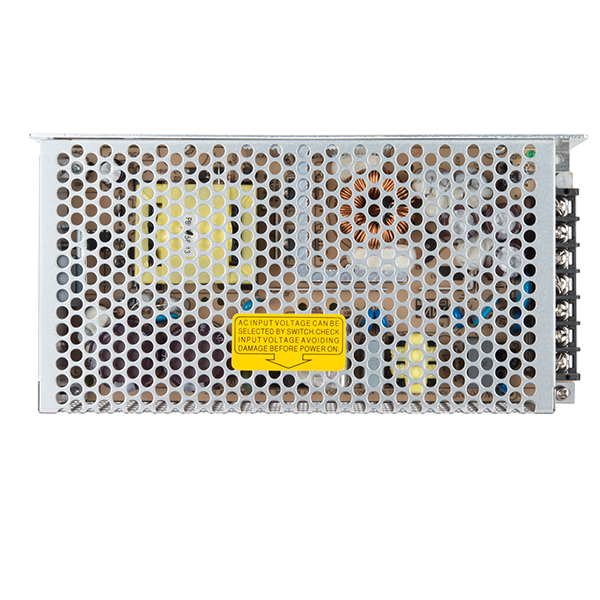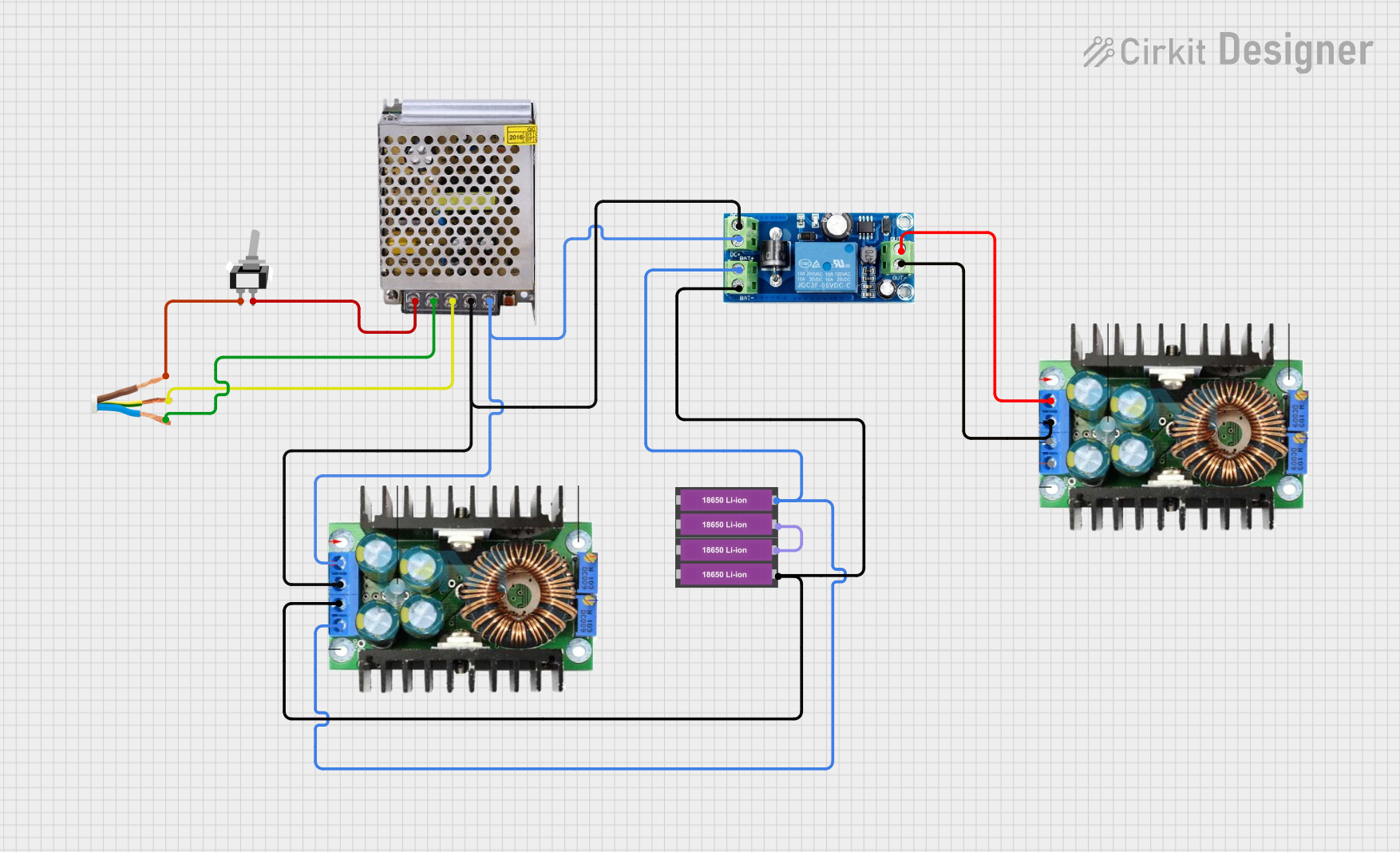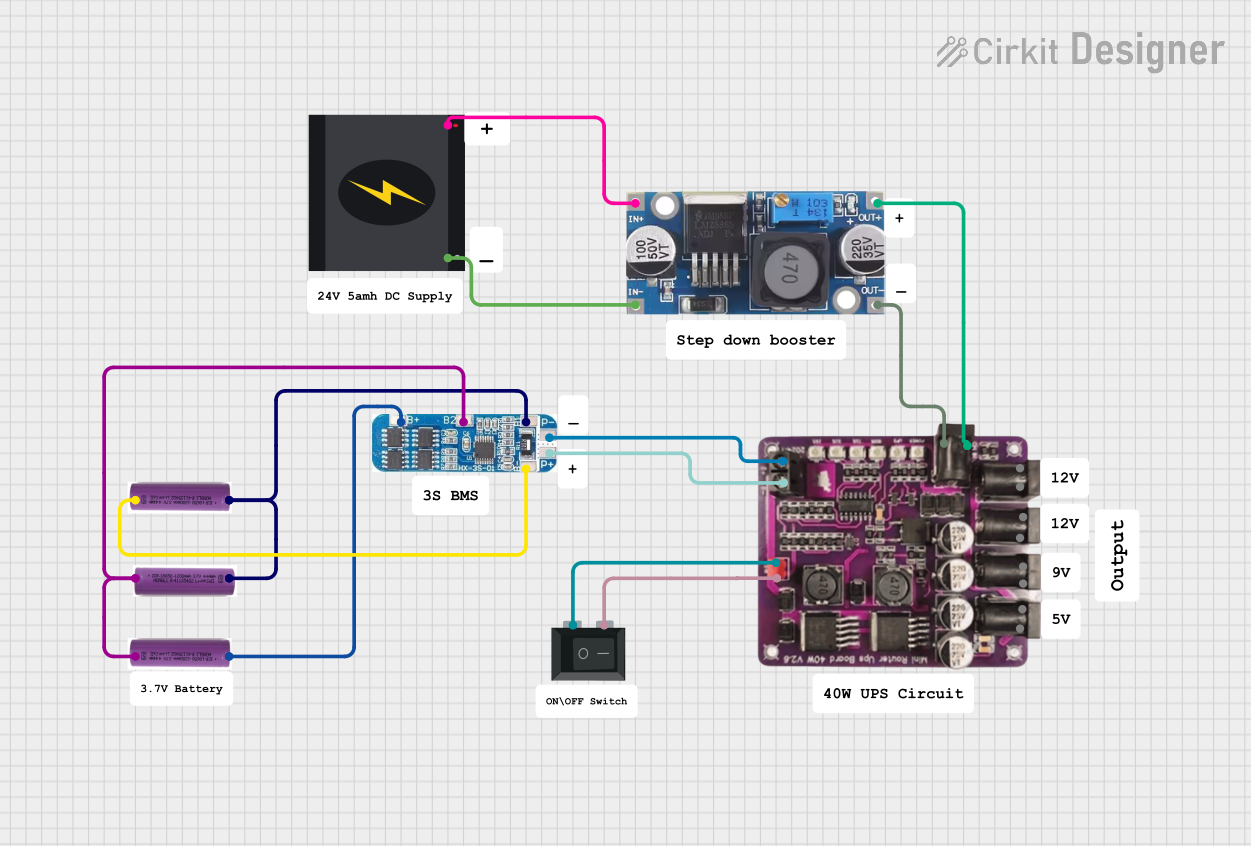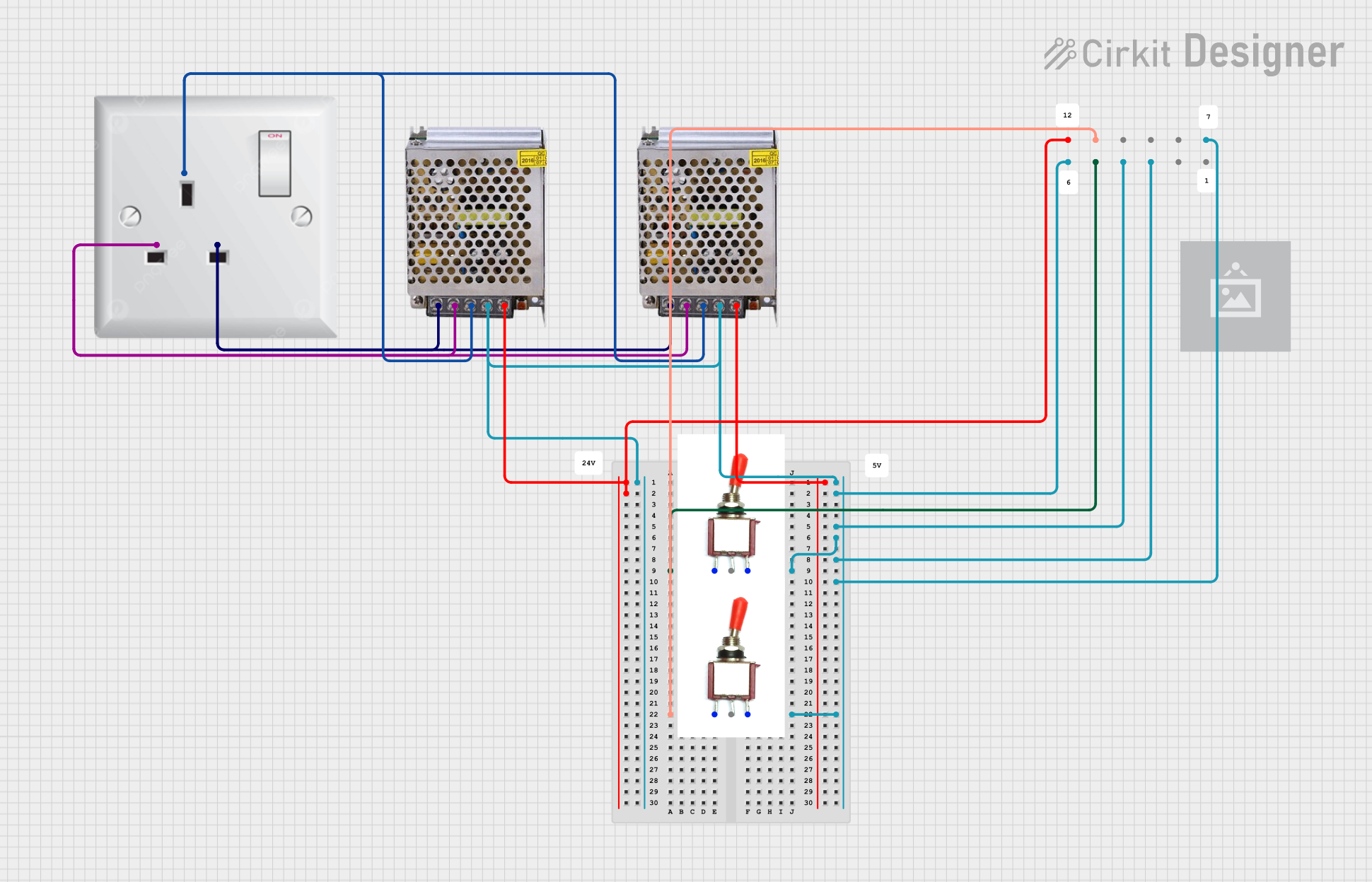
How to Use Switching Power Supply: Examples, Pinouts, and Specs

 Design with Switching Power Supply in Cirkit Designer
Design with Switching Power Supply in Cirkit DesignerIntroduction
A switching power supply is an essential component in modern electronics, providing efficient power conversion from one voltage level to another. It operates by rapidly switching the current on and off, which allows for a controlled and efficient transfer of electrical power. This type of power supply is known for its efficiency, compact size, and lighter weight compared to traditional linear power supplies.
Explore Projects Built with Switching Power Supply

 Open Project in Cirkit Designer
Open Project in Cirkit Designer
 Open Project in Cirkit Designer
Open Project in Cirkit Designer
 Open Project in Cirkit Designer
Open Project in Cirkit Designer
 Open Project in Cirkit Designer
Open Project in Cirkit DesignerExplore Projects Built with Switching Power Supply

 Open Project in Cirkit Designer
Open Project in Cirkit Designer
 Open Project in Cirkit Designer
Open Project in Cirkit Designer
 Open Project in Cirkit Designer
Open Project in Cirkit Designer
 Open Project in Cirkit Designer
Open Project in Cirkit DesignerCommon Applications and Use Cases
- Computer and server power supplies
- Consumer electronics (TVs, gaming consoles)
- Industrial control systems
- LED lighting
- Telecommunications equipment
- Battery chargers
Technical Specifications
The Mean Well 12V DC switching power supply is a reliable and efficient source for your power needs. Below are the key technical details and pin configuration for this component.
Key Technical Details
| Specification | Value |
|---|---|
| Input Voltage | 85 - 264 VAC |
| Output Voltage | 12 VDC |
| Output Current | Up to X Amps |
| Frequency | 47 - 63 Hz |
| Efficiency | Up to XX% |
| Operating Temperature | -20°C to +60°C |
| Safety Standards | UL, CE, etc. |
| Dimensions | XX x XX x XX mm |
Note: Replace 'X' and 'XX' with actual values from the manufacturer's datasheet.
Pin Configuration and Descriptions
| Pin Number | Description |
|---|---|
| 1 | AC Line Input (L) |
| 2 | AC Neutral Input (N) |
| 3 | Ground (⏚) |
| 4 | DC Output Positive (+) |
| 5 | DC Output Negative (-) |
Usage Instructions
How to Use the Component in a Circuit
Connecting Input Power:
- Connect the AC line input to pin 1 and the AC neutral input to pin 2.
- Ensure proper grounding by connecting pin 3 to the earth ground.
Connecting Output Power:
- Connect your load to the positive output (pin 4) and negative output (pin 5).
- Ensure that the load does not exceed the rated output current of the power supply.
Important Considerations and Best Practices
- Always verify input voltage compatibility before powering the device.
- Do not exceed the maximum rated output current to prevent overheating and potential damage.
- Ensure proper ventilation around the power supply for cooling.
- Use appropriate wire gauge for AC input and DC output to handle the current without excessive voltage drop.
Troubleshooting and FAQs
Common Issues
Power Supply Does Not Start:
- Check if the AC input voltage is within the specified range.
- Verify that the connections to pins 1 and 2 are secure and correct.
Output Voltage is Unstable or Incorrect:
- Ensure that the load does not exceed the power supply's maximum rated current.
- Check for any short circuits or overloads in the connected load.
Solutions and Tips for Troubleshooting
- If the power supply overheats, check for adequate ventilation and reduce the load if necessary.
- For noise-sensitive applications, consider adding additional filtering on the DC output.
FAQs
Q: Can this power supply be used with an Arduino UNO?
- A: Yes, it can power an Arduino UNO as long as the output voltage is regulated to a suitable level for the Arduino (typically 5V or 3.3V).
Q: What is the warranty period for this Mean Well power supply?
- A: The warranty period can vary. Please refer to the manufacturer's documentation for warranty information.
Example Arduino Connection
// Example code to demonstrate how to power an Arduino UNO with a 12V Mean Well Switching Power Supply
void setup() {
// Initialize digital pin LED_BUILTIN as an output.
pinMode(LED_BUILTIN, OUTPUT);
}
void loop() {
// Turn the LED on (HIGH is the voltage level)
digitalWrite(LED_BUILTIN, HIGH);
// Wait for a second
delay(1000);
// Turn the LED off by making the voltage LOW
digitalWrite(LED_BUILTIN, LOW);
// Wait for a second
delay(1000);
}
// Note: The Arduino UNO must be connected to the power supply through a voltage regulator
// or a DC-DC converter to step down the voltage to 5V.
Note: The above code is a simple blink example and assumes that the Arduino UNO is powered correctly with a regulated 5V supply derived from the 12V output of the Mean Well Switching Power Supply.